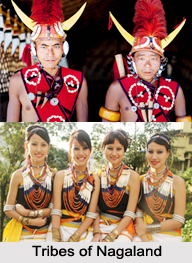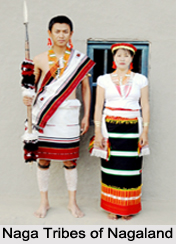 Tribes of Nagaland include a major part of the Nagaland community. The state of Nagaland is well known for its tribal community which is scattered not only within the boundaries of Nagaland but also in parts of surrounding seven sisters. It is a land of festivals and folklore that have been passed down for generations.
Tribes of Nagaland include a major part of the Nagaland community. The state of Nagaland is well known for its tribal community which is scattered not only within the boundaries of Nagaland but also in parts of surrounding seven sisters. It is a land of festivals and folklore that have been passed down for generations.
Different Tribes of Nagaland
The Nagas belong to the Indo-Mongoloid family. Tribes of Nagaland are 16 types which are largely known as: Angami Tribe, Ao Tribe, Chakhesang Tribe, Chang Tribe, Kuki Tribe, Kachari Tribe, Khemungan Tribe, Konyak Tribe, Lotha Tribe, Phom Tribe, Pochury Tribe, Rengma Tribe, Sangtam Tribe, Sema Tribe, Yimchunger Tribe and Zeliang Tribe. The tribes of Nagaland have their own distinctive language.
Angami Tribe: The Angamis are one of the major Naga tribes of Nagaland. The Angamis are known for terraced wet-rice cultivation; because of this labour-intensive cultivation, land is the most important form of property among the Angamis.
Ao Tribe: Ao Nagas are found in the north-eastern part of Nagaland, mostly in the central Mokokchung District and also few are found in the adjacent Assam state. Mokokchung, one of the districts in Nagaland, is considered as the home of the Ao Naga tribe.
Chakhesang Tribe: Chakhesangs are the former Eastern Angami, who have separated from the Angami Naga tribe, and are now recognized as a separate tribe.
 Chang Tribe: Chang is one of the recognized Scheduled Tribes. The tribe was also known as "Mazung" in British India.
Chang Tribe: Chang is one of the recognized Scheduled Tribes. The tribe was also known as "Mazung" in British India.
Konyak Tribe: Konyaks are the largest of the 16 tribes inhabiting Nagaland. Located in the mountainous regions of northeast, they are spread across Nagaland and Arunachal Pradesh. They come with a history of brutal headhunting and animistic culture.
Each tribe has its own attire, beaded jewelleries and signature hat. The people of Nagaland are distinctly marked by their looks which are usually marked by medium height, with low facial features, straight hair and brownish skin. These are some of the typical tends of mongoloid race which is visible in the Naga tribes.
Culture of Tribes of Nagaland
The tribes of Nagaland are separately marked by indigenous traditions, customs, language and dresses. Traditional songs and dance forms are an integral part and parcel of the rich culture of the tribes of Nagaland. The costumes of tribes of Nagaland are colourful. Interestingly, some of their dresses are designed as per different occasions.
Festivals of Tribes of Nagaland
Tribes of Nagaland are well-known for their festivals which are an integral part of the land. The colourful festivals usually centre on agriculture which is the main occupation of the land. All the tribes celebrate different seasonal festivals with a pageantry of colour and local music. The tribes of Nagaland consider their festivals sacred with compulsory participation, and the celebrations are done with high enthusiasm, dedication and passion.
Occupation of Tribes of Nagaland
Tribes of Nagaland are primarily engaged in agriculture. Almost 80 percent of population is engaged in agriculture at the hill slopes that receives sufficient amount of rainfall. Nagaland is famous for its handicrafts which exhibit beauty and richness. Each tribe produces its own special kind of handicrafts with different colours and designs.
The popularity of Nagaland in and outside India is mainly due to the co-existence of a number of colourful tribes and ethnic cultures that are prevalent there.
















